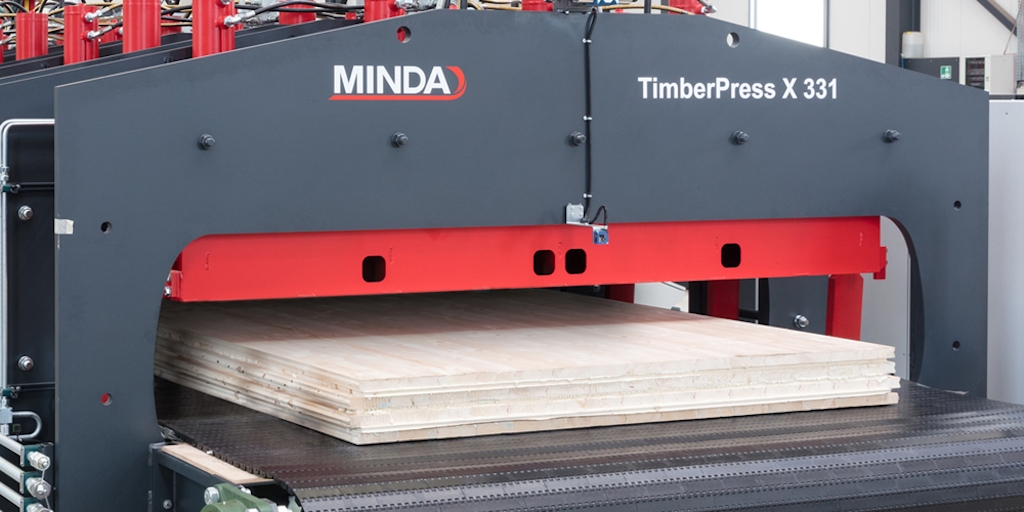An exciting and long-awaited announcement came in mid-February: A shuttered paper mill in Millinocket, Maine, will open once more, this time as a factory for cross-laminated timber (CLT) and other mass timber products. Two days later, another company also announced its intention to open a CLT plant somewhere in the state. Each plans to open within 12-18 months, ready to supply the construction material for new tall wood buildings in the U.S. Northeast by sometime in 2019.
Both companies—LignaTerra Global, of North Carolina, and SmartLam, based in Montana—were attracted to New England by its suitable and abundant wood species, available manufacturing sites, and skilled forest products workforce. They have also noticed the eastern United States’ growing interest in building taller buildings with wood, which gave the companies confidence there will be a strong market for their products.
The New England Forestry Foundation is proud to be part of the network that has helped attract this interest in New England as the next place to invest. NEFF started its Build It With Wood program when staff experts noticed a growing revolution in construction around the world that has enabled wooden buildings as tall as 18 stories, with higher ones still to come. NEFF was particularly intrigued by the fact that the dominant materials for these buildings—CLT and glulam—are made by gluing small pieces of wood together to create large wood structural panels and beams that can replace steel and concrete. It was clear this could open a major new market for low-value wood, which is exactly the market needed after the collapse of the pulp and paper industry in Maine and the long decline of the forest products industry in southern New England.
With support from the USDA Forest Service’s Wood Innovations Program, NEFF commissioned Pöyry, a global forestry and energy markets consulting firm, to evaluate New England’s building markets and wood species to see whether a mass timber industry could be developed here. In April 2017, NEFF staff members and Pöyry experts presented the findings to interested audiences consisting of sawmill operators, landowners, architects, builders, developers, and political leaders at two forums—one at the University of Massachusetts-Amherst and the other at the University of Maine-Orono.
Neither university was a stranger to mass timber. Both have been conducting research on using New England wood species for mass timber products, and UMass-Amherst is host to the recently opened Design Building, the largest mass timber structure east of the Mississippi.
Despite their familiarity with the topic, the forums’ hosts and audience members were thrilled by the findings of our analysis: just a one percent penetration of mass timber into the mid-rise building segment in the U.S. Northeast would be enough to support perhaps two working mills in the region, and New England’s forests can easily produce a suitable and sustainable wood supply for those mills.
NEFF’s analysis was only one of several factors that increased interest in mass timber, and they all played a part in bringing new CLT mills to Maine. The University of Maine has been working with economic development specialists, the building industry, and the federal government to generate confidence in Maine as a place to invest. NEFF and partners such as WoodWorks—a project of the USDA and the Softwood Lumber Council—have met with architects, developers, other universities, city agencies, and policymakers who were all eager to learn more. Through these conversations and further research, we have learned that mass timber could particularly play a role in addressing one of our region’s most pressing problems: the lack of affordable housing in growing urban areas such as Boston.
In buildings above six stories, “stick frame” wood construction is typically not allowed. Steel does not become economical until about 12 stories in height, however, so there is a growing “density gap,” with not many housing units being built above five or six stories. Mass timber could enable more of the six to nine story mixed-use housing developments that developers and city planners envision, but that steel prices prohibit.
Building with mass timber products has other advantages as well, including far shorter construction times, quieter and cleaner construction sites, airtight structures made more energy efficient by the high thermal values of wood, and a major advantage in sustainability. Replacing steel and concrete with mass timber avoids the high greenhouse gas emissions associated with cement kilns and blast furnaces. The timber itself serves as a “carbon sink” by sequestering carbon in the wood for the life of the building.
It also presents the possibility of bringing jobs back to rural New England, a goal shared across the region and emphasized by the companies that plan to open new CLT mills.
At the press conference announcing its decision to come to Maine, LignaCLT Maine, LLC estimated their facility would directly create more than 100 jobs within five years, “while sustaining hundreds more in value chain operations.” SmartLam is still in the process of selecting its site but also expects to create jobs on-site and throughout its chain operations.
For both companies, bringing CLT to New England just makes sense.
“We’re already doing projects on the East Coast, so it’s an expansion into a ready and receptive market,” says Robert Tudhope, Vice President for Product Development at SmartLam. “We’ve already certified [CLT] for the wood that is in the Maine wood basket. And the University of Maine has been a fantastic partner, so we want to further cement that relationship.”
It now seems possible that the mass timber building revolution has come to New England. This is good news indeed for our forests, our rural economies, and our cities—and all at the same time. NEFF will continue to play a catalytic role in moving this new technology forward.
Writing by Nicole St. Clair Knobloch, photo courtesy of SmartLan.


